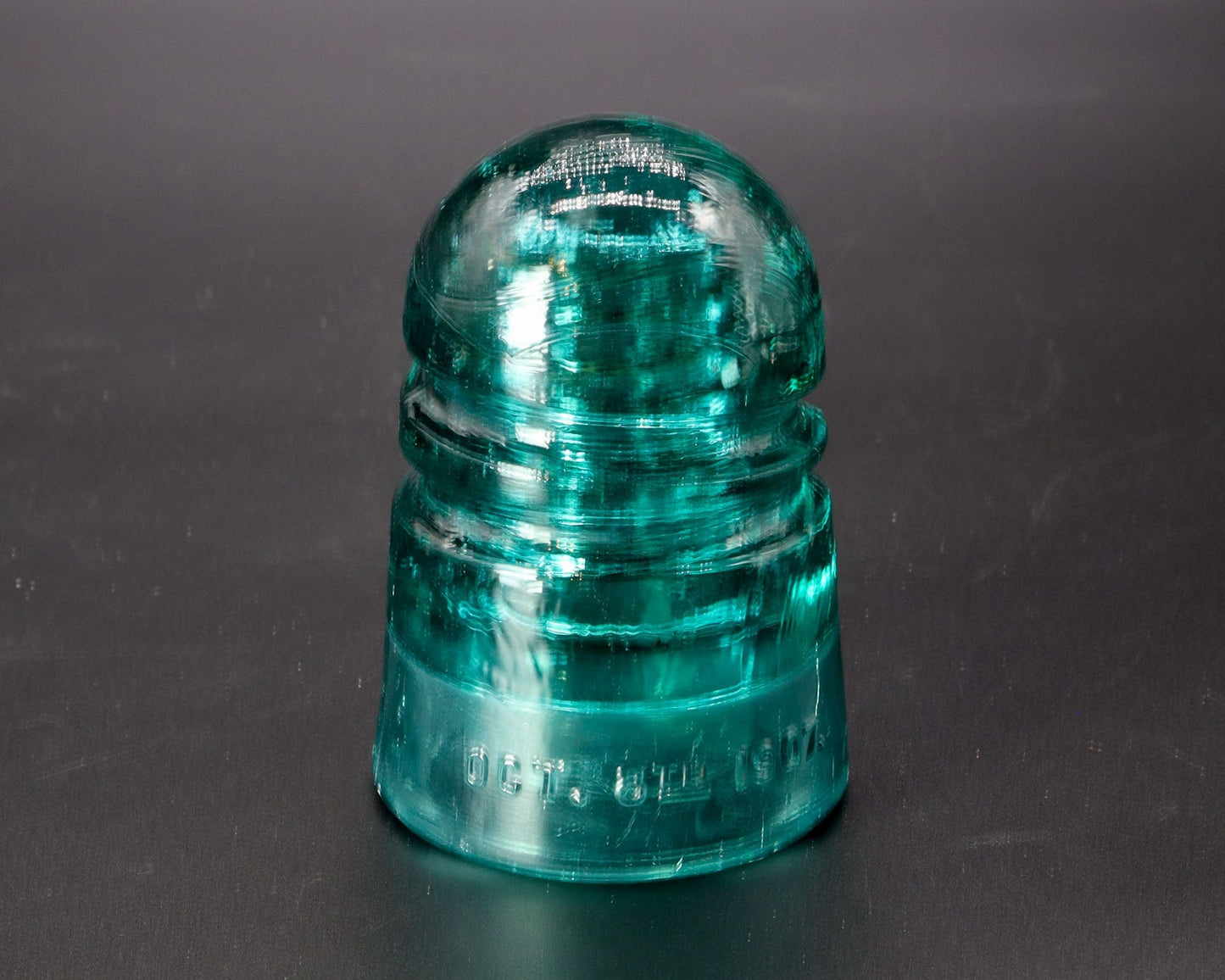LightAndTimeArt
Hemingray-Brookfield Spiral-Groove Aqua-Green Vintage Glass Insulator
Hemingray-Brookfield Spiral-Groove Aqua-Green Vintage Glass Insulator
Couldn't load pickup availability
Aqua-Green Brookfield Spiral-Groove
Nicknamed the spiral groove because of the unique spiral-shaped wire groove patented on October 8, 1907. These were made both by Hemingray and Brookfield. The quickest way to identify a Hemingray-made CD 147 is to check the embossing. "PATENTED OCT 8 1907" will always appear together on one side of the insulator. (Brookfields always have a separate "PATENTED" on one side by itself.) Hemingray also manufactured the un-embossed CD 147.
Note: The insulators a free of any major cracks but might have some minor nicks/chips.
Use this insulator with my indoor lamp base.
Dimensions
Dimensions
Insulator diameter: 3.0 inches
Height:4.25 inches
CD Number
CD Number
CD 147
History
History
Hemingray Glass Company is the best known and was the most prolific glass insulator manufacturer in the world. Although best known for their electrical insulators, Hemingray also produced many other glass items, including bottles, fruit jars, pressed glass tableware, syrup pitchers (“molasses cans”) in milk glass and other colors, tumblers, battery jars, fish bowls, lantern globes, kerosene oil lamps, and much, much more.
Share



-
Glass Insulators
Glass insulators were first produced in the 1850's for use with telegraph lines. As technology developed insulators were needed for telephone lines, electric power lines, and other applications. In the mid 1960's a few people began collecting these antique glass insulators. Today there are over 3,000 insulator collectors.
-
“CD” NUMBERS
All glass pintype insulators are classified in what is called the “CD Numbering” system of identification. This system was created and used by N.R. “Woody” Woodward, an early pioneer, researcher and author in the field of collecting glass insulators. The CD (Consolidated Design) numbers basically identify insulators by their shape and profile, regardless of exact embossed markings, glass color, or base type.


